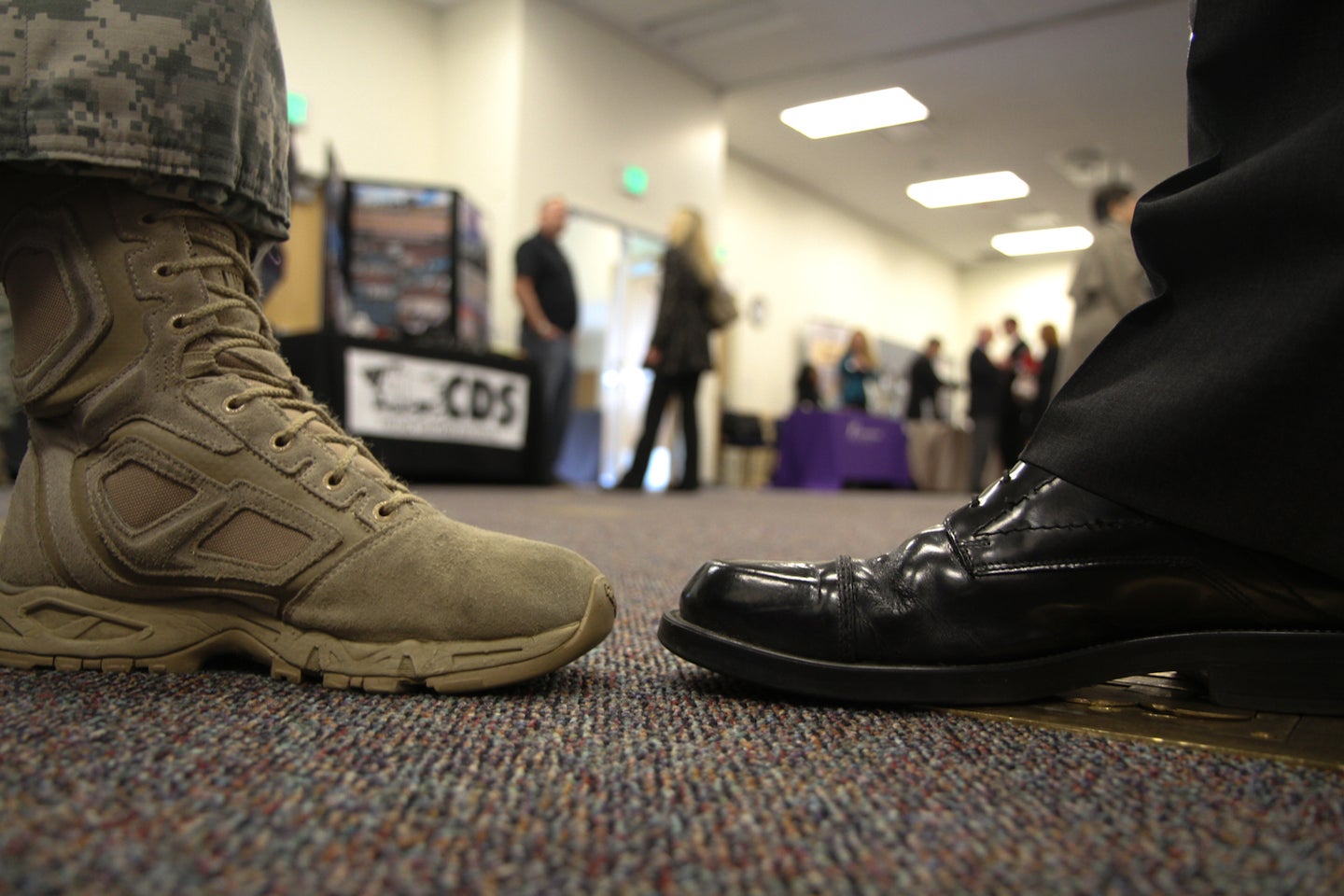5 tips for how to successfully transition out of the military
Leaving the military can be daunting. Here are some tips to help you as you get started.
- Military Life
- Sponsored

Leaving the military can be an incredibly intimidating experience, especially if service is all you’ve known for most or all your adult life. Knowing what obstacles lie ahead can help you avoid pitfalls and manage your expectations. Here are some key tips that will give you the best shot at a successful transition.
1. Build a strong set of resumes.
Translating your knowledge, skills, and abilities into multiple resume formats for the public and private sectors is the first step towards success when applying for post-military jobs.
Chronological resume. This format is most likely what comes to mind first when you think of resumes. It lists your work experience in order, from most recent to oldest. Chronological resumes are standard in most careers fields and are the best option if you’ve been working in your desired area of interest for a while because it highlights your applicable experiences.
Functional resume. This type of resume highlights your skills and abilities, rather than relying on work experience to make you a good candidate for a job. If you’re breaking into a new career field or are lacking experience for your desired job, you’ll want to create a functional resume to feature your potential to be the best candidate. If your education matches your career interest, make sure to highlight it here.
Federal resume. The federal job website USAjobs.gov relies heavily, though not exclusively, on automated filtering systems for portions of the hiring process and has specific requirements for your resume. A lot of your success in getting through the first round of screening is matching keywords in the job description to your resume. Set yourself up for success by using the websites FedsHireVets and FASClass – they’re key to helping you navigate the complex federal hiring system.
2. Take advantage of your benefits.
There are a multitude of benefits available to veterans through the VA – home loans, G.I. Bill for education, financial compensation for disability, and medical care, to name a few. Some former service members are hesitant to take advantage of what the VA has to offer, either from feeling like they didn’t do enough to earn disability compensation or fear of the process of applying for benefits being frustrating and time-consuming. VA benefits are not a handout, and applying for them doesn’t take anything away from anyone else who you think “had it worse.” There are a multitude of accredited Veteran Service Organizations (VSOs) who can help you navigate the claims process.
3. Transition your healthcare plan.
Moving from military health coverage to a private plan within 90 days of your separation is important to avoid gaps in medical care. Tricare offers 90 days of continued coverage after separation to give you time to find a new healthcare plan. But even if you’re retaining Tricare benefits as a retiree, you’ll still have to apply to continue your benefits. Most insurance plans have waiting periods before your coverage starts, so make sure to sign up with an insurance provider with ample time to spare before you lose coverage. If you are moving into the workforce post service, many employers offer insurance options in their benefits packages, so explore your options before committing.
4. Get life insurance coverage.
Servicemembers Group Life Insurance (SGLI) won’t provide you ongoing coverage after you leave the military, so it’s important to start shopping for life insurance coverage that suits your needs and the needs of your family. A lot of insurance providers offer a buffet of options to fit your stage of life and budget. There are some key things to consider, like if you want term coverage versus whole life coverage, and how much you’ll be paying in premiums. Who you buy your insurance from is just as important as the policy itself, so make sure to shop around and find what you need. There are a lot of veteran-friendly insurance providers who cater specifically to the needs of service members.
5. Take advantage of available resources.
If you don’t know where to start or need a little help on your journey from service member to civilian, there are a lot of places to find help. Whether you need help making a resume, career counseling, financial planning, or mental health care, there are plenty of places to turn. Organizations like the USO, Hire Heroes, and Transition Assistance Program are just a few that offer support and assistance to transitioning service members. Becoming a fully integrated civilian doesn’t happen overnight. It’s a process that requires time, patience, and a lot of adjustment. Not only is it OK to ask for help, but it is wise to do so. Entering the civilian workforce after military service can feel a bit bewildering, not unlike your first days of basic training. Seemingly simple things like searching for a job, choosing what to wear, or interviewing for a position can feel foreign and overwhelming at first. Getting help from a transition expert can help greatly reduce the stress and anxiety associated with leaving the military.
Transitioning out of the military is a monumental life change, whether you feel prepared for it or not. There are a lot of unknowns to navigate and an entirely new way of life to get used to. Planning ahead, using available resources, and finding the right partners are the best path forward. U.S. Bank is proud to support those who serve and has been recognized by Military Times on its annual Best for Vets list for 11 consecutive years. Whether you’re beginning your military transition or already wrapped up in your DD-214 blanket, U.S. Bank is ready to serve you.